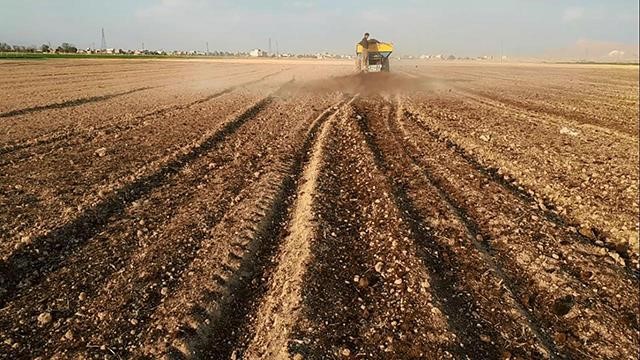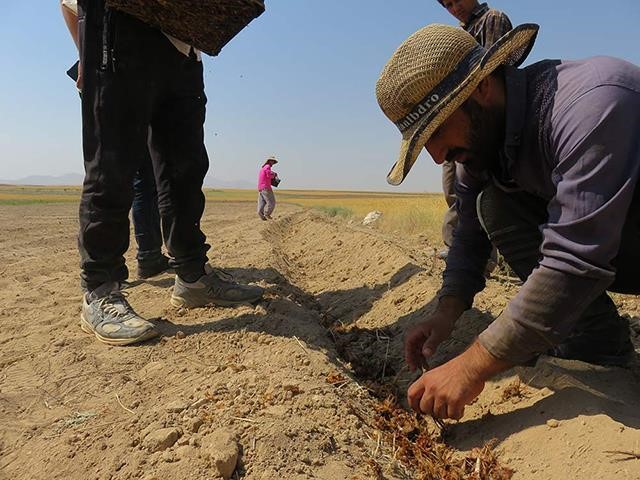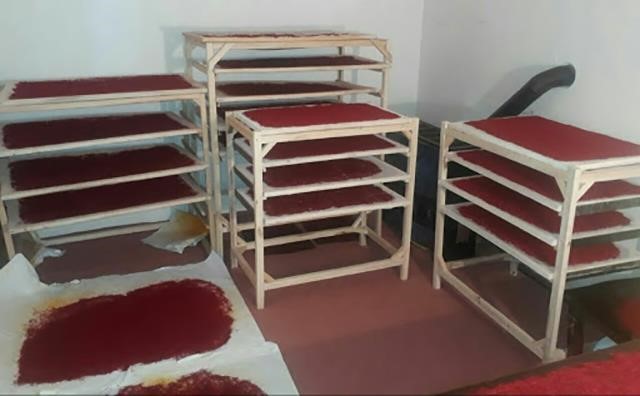Written by Oyster Pack’s Public Relations
Iranian saffron is known all over the world; however nowadays, with the growing popularity of this valuable product and the presence and activity of such countries as Pakistan, Afghanistan and China, we must try hard for a challenging competition in the global market. But why does not Iranian quality saffron reach the final consumers? What are the important points in producing high quality saffron?
The Steps of planting quality saffron
Iran is very suitable for producing high quality saffron in terms of climate and soil. However this is not enough and you should follow some tips from the very beginning in order to maintain the quality of saffron and deliver it to the customers. In the following, we will examine these points. Be with us.
1. The suitable climate for producing quality saffron
The climate that is appropriate for growing quality saffron is semi-arid. Places with mild winters and hot, dry summers are regarded as suitable places in this regard.
2. The required soil for growing quality saffron
The soil that is needed to grow saffron should be light, which is usually a combination of sand with a very small amount of lime. Soil ph should be between 7-8. It should be noted that saffron will not grow well if the soil is hard and brittle or full of humus.
Saffron should grow in a land free of any weeds and containing sweet soil. Since saffron bulbs have been in the ground for 5-7 years, the farmers should pay attention to the condition of the soil and take the necessary care before planting. It should be remembered that saffron should not have been cultivated in the land in question for the past several years, because the soil loses its power and storage and this issue will decrease the quality of saffron.
Most parts of Iran benefit from this climate and suitable soil conditions for growing quality saffron. Hence, in case of maintaining these conditions and observing some other points, saffron with unique quality can be exported to the world.
3. Necessary fertilizers to produce suitable saffron
On average, 100 kg of urea fertilizers with 10-15 tons of animal manure with chemical fertilizers containing phosphorus and potassium is sufficient for every 3 years per hectare. It should be remembered that this amount of fertilizer should be applied to the soil long before planting, since being close to the time of preparing the land for planting saffron reduces the quality of the final product.

4. Selecting quality seeds
In order to have quality saffron, the right seed must be chosen. Finally, from the grown onions, those with a good food supply (about 8 grams) must be selected and prepared for planting.
The onions should not be empty or rotten but in perfect health. Mother onions have several shells because of their preparation for childbirth. The upper shell is rough and fluffy and inside is thick, white, sweet and one-piece. The diameter of this onion is about 3-5 cm.
Onions should be healthy, fresh, without any wounds and free from any disease and contamination. To protect the onions from any contamination, some permissible pesticides such as sarzan or granozan can be used while planting. For every 100 kg of the onions, 300-500 g of poison is used. Observance of all points can ultimately guarantee the quality of saffron that is produced.
Nowadays, with the help of modern technologies and relevant experts, high-quality and developed saffron seeds and very strong onions are prepared for planting and provided to farmers.
Currently, our country, Iran, can use the potential of a large number of agricultural students in order to help the producer and at the same time provide suitable job opportunities for the educated class.
5. Planting quality saffron onions
It is better to plant the onion as soon as possible after removing it from the ground so that it can cope with the new conditions and get ready for growth. The best time to remove and replant is during the sleeping period of the saffron onion.
In order to have quality saffron for planting onions, it should be in the period from mid-May to mid-July for 60 days. It is better not to remove the onion after this time, since the onion may be ready for germination and it may be too late to take action. The waking period of saffron onions is from November to mid-May.
About 2 tons of onions are needed for each hectare. In case the onions do not come out in the 7th year, they gradually become empty and disappear. The number of the onions in the seventh year is about 5 times the number of onions at planting time. To maintain the quality of saffron, it is vital to carefully observe the hygienic issues in keeping onions.

6. The suitable land for growing quality saffron
In early spring, the land is ploughed both deeply and shallowly and, if necessary, rotten animal and chemical fertilizers are applied. The soil is then ploughed again and left. Before planting and in order to make the soil ready, irrigation is initially carried out and after getting rid of the weeds, it is plowed and the clumps are crushed. Then the plotting is done.
The land should be in a sunny place away from the shade of trees and free of small stones. It should always be remembered that everything should be done according to scientific instructions so that the quality of saffron is maintained.
7. The correct way to plant saffron
After removing and selecting the appropriate onions, it is time to plant. The onions should be in regular rows at a distance of 7 to 10 centimeters and at a depth of 20 to 25 centimeters. It is better that the distance between the rows is about 20 centimeters.
It should be remembered that since this onion will remain in the soil for 5 to 7 years and produces one of the most valuable nutrients, the distance is better not to be less than this. In this case, high-quality saffron can be harvested until the last year.
8. Proper irrigation to harvest quality saffron
For a successful harvest of saffron, irrigation must be done very carefully. It is better to do the first irrigation after planting. Since the growth of saffron depends on this irrigation, the initial irrigation is done in a few days so that the harvest can be done in a few days and fresh and lively flowers are harvested every day to maintain the quality of saffron.
This product is resistant to dehydration and in general it needs less water than other agricultural products. However you should pay attention to the intervals and times of irrigation.
The first autumn irrigation must be 15 days before the stem comes out. If this issue is not observed, the leaves will grow first and there will be a problem when harvesting. Saffron no longer needs much irrigation and most of the winter rainfall provides the essential water for this product. These rainfalls or winter irrigations help the onions to be larger. Weeds have always been a very dangerous competitor to quality saffron. Regarding this valuable product, weeds should be destroyed during planting and harvesting.
9. Harvesting quality saffron
One of the most beautiful natural landscapes is the land where saffron flowers are grown. The pleasant smell of saffron flowers is unique in such an atmosphere. In order to have a correct and principled harvest that does not harm the quality of saffron, some points must be observed.
The best time to harvest flowers is from sunrise until the sun covers the surface of the farm. At this time the flowers are fresh and can be harvested as buds. In case of delay in harvesting and falling sunlight, the flowers become lethargic and wither over time. This delay can greatly reduce the quality of saffron.

In addition to the time of harvesting saffron, there are other tips to maintain the quality of saffron which include:
1. Using hygienic ware
Harvested flowers should be collected in baskets and hygienic ware so that they are protected from contamination from the beginning.
2. Loading site
Harvested flowers should be kept completely cool and away from sunlight and free of any contamination.
3. How to maintain
The flowers should not be stacked on top of each other. To maintain their health and freshness, they can be spread on a clean and pollution-free land and care must be taken not to spill dust and unsanitary items on the flowers.
4. Separation of stigmas
The best time to separate the stigmas is immediately after harvest. Finally, this should not take more than 10 hours because any delay will reduce the quality of saffron.
5. Observing hygienic points
Observing Hygienic points is obligatory for the environment and workers. Workers must trim their nails, wash and disinfect their hands, and wear clean clothes. The environment must be sterile and free of any contamination so that there is no possibility of contamination.
6. Drying time
The longer the drying time of the stigma is after separation, the higher is the quality of saffron.

Conclusion
Unfortunately, the failure in observing tips and delicacies in different stages makes the production of quality saffron difficult. If the manufacturers comply with all the requirements, we hope to produce goods with international standards and face the global market. These considerations are determined at the end of the work and at the time of saffron’s quality analysis. It should be remembered that in assessing the quality of the product, there are a number of negative cases and contaminants that determine the amount and standard of the quality.
Contact us now on whatsapp +971-503058098
You may like to read these article:
What are the important points in designing packing containers of saffron?
This post is also available in: العربية (Arabic)


